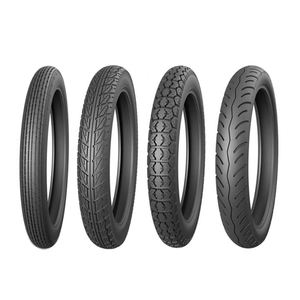The Definitive Guide to Motorcycle Boots
The Definitive Guide to Motorcycle Boots
Blog Article
Rumored Buzz on Motorcycle Boots
Table of ContentsExcitement About Motorcycle BootsUnknown Facts About Motorcycle BootsThe Best Strategy To Use For Motorcycle BootsFascination About Motorcycle Boots3 Easy Facts About Motorcycle Boots Shown3 Easy Facts About Motorcycle Boots Described
The key parts of contemporary motorcycles are presented below.; this has actually been utilized all through motorcycle background yet is now coming to be much more common.It was commonly out of favor and typically related to as a negative idea at the time. It has given that gained some prestige in the modern customized bike globe as well since of the space cost savings it can afford and the reference to an earlier period.
Though any type of storage space tank for gas may be so called, the term is typically applied to component of an engine system in which the gas is stored and driven (gas pump) or launched (pressurized gas) right into an engine. A motorcycle fork is the part of a motorbike that holds the front wheel and enables one to steer.
Motorcycle Boots - The Facts
The 'fork' on a motorcycle consists of multiple parts. The three-way trees (also recognized as yokes) hold the fork tubes (which have the fork springtimes), and are secured to the neck of the frame by the guiding stem.

, which calls for both lubrication and adjustment for elongation (stretch) that happens via wear. The lubricating substance is subject to being thrown off the fast-moving chain and results in gunk and dirt accumulation. Chains do deteriorate, and extreme wear on the front and back gears can be hazardous.
Traditional roller chain-drives experience the possibility for resonance, as the reliable radius of action in a chain and sprocket combination regularly alters throughout the revolution ("chordal action"). If a drive sprocket rotates at continuous RPM, after that the chain (and the driven visit the site gear) has to accelerate and slow down regularly. The majority of chain-driven bikes are fitted with a rubber bushed back wheel center to eliminate this vibration issue.
These chain oilers vary read more in class, however all add considerably to the life of the chain. The customized of lubing by immersing the chain in a tin of hot grease ceased in the very early 1970s, once most chains had rubber "O'-rings.
Facts About Motorcycle Boots Revealed
A toothed belt is regularly utilized. They are not as long lasting when subjected to high horsepower as a chain. You can not modify the size and change last drive ratios as conveniently as chains. They additionally can not wrap as very closely around chains. And need bigger wheels compared to chain gears to obtain an efficient final drive proportion.
Inside the bell real moved here estate a bevel equipment on the shaft friends with another on the wheel mount. This setup is superior in terms of noise and tidiness and is practically maintenance-free, with the exception of occasional fluid modifications.
The additional gear sets are a resource of power loss and included weight. A shaft-equipped motorbike might additionally be susceptible to shaft effect. Practically all high-performance auto racing motorbikes utilize chain-drive because they are the most mechanically efficient transferring power to the rear wheel. A cable wheel and pneumatically-driven bike tire on a Ural The wheel edges are generally steel or light weight aluminum (generally with steel spokes and an aluminum hub) or mag-kind cast or machined light weight aluminum.

Motorcycle Boots - Questions
There are tires developed for dust bikes, touring, sporting activity and cruiser bikes. Dust bike tires have knobbly, deep treads for optimum hold on loose dust, mud, or crushed rock; such tires have a tendency to be less stable and noisier on paved surface areas.
Touring tires are generally made from a tougher rubber substance for greater durability, these might last longer yet have a tendency to provide less straight-out grip contrasted to sports tires at optimum operating temperatures. Exploring tires usually offer a lot more grasp at lower temperature levels and can be a lot more matched to riding in cold or wintertime conditions where a sport tire may never ever reach its optimum operating temperature level.
These often tend to have more powerful sidewalls as they are generally fitted to larger machines. Motorsport or competing tires provide the highest possible of degrees of grip. Because of the high temperatures at which these tires usually run, make use of outside a racing setting is unsafe, commonly these tires do not reach their optimum temperature level which provides much less than optimal grip.
The 10-Second Trick For Motorcycle Boots

This can result in brake dive. Brakes can either be drum or disc based, with disc brakes being extra common on huge, modern or a lot more expensive motorcycles for their far superior quiting power, particularly in wet conditions. There are many brake-performance-enhancing aftermarket parts offered for the majority of motorbikes, including brake pads of varying substances and steel-braided brake lines.
Report this page